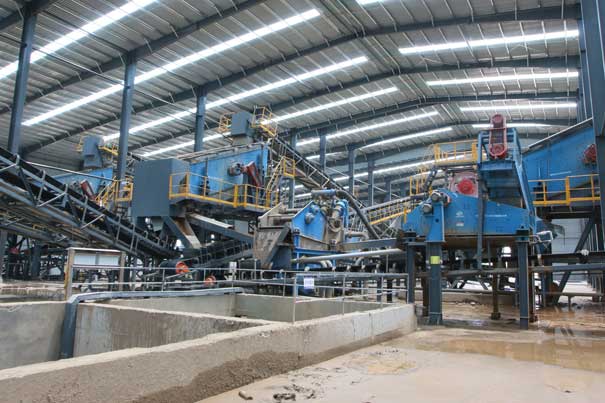When selecting the crusher, the type, hardness, inlet and outlet particle size, and output and construction site of the crushed material should be fully considered.
1.The type and hardness of the material
The type and hardness of the material are the first factors to consider when selecting the crushing equipment. Different material types will have different hardness and structure. The hardness of the material indicates the softness and hardness of the material, which is directly related to the fragility of the material. Mohs hardness means that it is divided into 10 grades. The higher the grade, the harder the material is, the more difficult it is to break, and the higher the requirements for crushing equipment. Fragility indicates the physical properties of whether a material is easily broken. The factors affecting the friability are mainly the strength, hardness, density, structure, water content, viscosity, crack, surface condition and shape of the material.
According to the difference of structure and principle, the commonly used crushing machinery mainly includes jaw crusher, impact crusher, hammer crusher, cone crusher and roll crusher, etc. Each product will be produced according to the specific production. Requirements are divided into different specifications and models. Before selecting the pulverizing equipment, firstly, according to the material properties of the granules, the pulverized products, and the granularity requirements, the corresponding application method should be adopted to confirm the way of pulverizing the force, and then the model of the pulverizing equipment is determined. Mainly divided into the following situations:
① Hard materials with large or medium grain size generally use crushing and impact crushing, such as jaw crusher, tooth roller crusher, etc.
② Abrasive materials are generally crushed, and the surface of the pulverizing tool is smooth.
③ Abrasive materials are impact crushed, crushed, and ground. The crushing tools have sharp teeth.
④ Hard materials with smaller particle size generally adopt crushing, impact crushing and grinding. The surface of the pulverizing tool has no teeth and is smooth, such as a roller crusher.
⑤ ductile materials generally use shear or fast strike, such as hammer crusher.
⑥ powder or muddy materials should be ground, crushed or crushed, such as ball mill.
⑦ Multi-component materials are crushed by the selection of impact K, and various force fields can also be combined.
2. The input and output granularity
The ingress and egress granularity is used to determine the type and crushing level of the required crushing equipment.
If the content of coarse particles (large dry discharge port size) in the crushed material is high or the ratio of the maximum mass of the ore to the ore width is large, the crushing ratio that the crusher needs to achieve (the particle size of the material before crushing and after crushing) The ratio of the particle size of the material is large, so the productivity is reduced; when the content of fine particles (close to or smaller than the size of the discharge port) of the crushed material is large or the ratio of the maximum mass of the ore to the width of the ore is small, the crush ratio to be achieved is Small, so its productivity is correspondingly improved.
If the feed particle size is large and the discharge particle size is small, secondary crushing or multi-stage crushing is often required. If the material to be broken has a small particle size, it does not require multi-stage crushing. Jaw crusher and some hammer crushers are generally used as level 1 crushing, while impact crushers, cone crushers, roll crushers and hammer crushers are generally used as secondary crushing or even tertiary crushing. .
3. The production
Production is also an important indicator for determining crushing equipment. It is conventionally understood that the higher the production requirements, the larger the required crushing equipment specifications, and the corresponding inputs and outputs will increase. Now the crusher in the market has an output of 10 tons per hour and hundreds of tons per hour. It is more reasonable and cost-effective to choose what kind of equipment to use according to your specific requirements and how to arrange the production line.
4. The construction site
The specific situation on the site is the most direct flash element that affects the choice of crusher equipment. For example, the site size of the construction site, the specific position of the crushing equipment, etc., these are the impact of the crushing equipment and the specific design of the production line.

